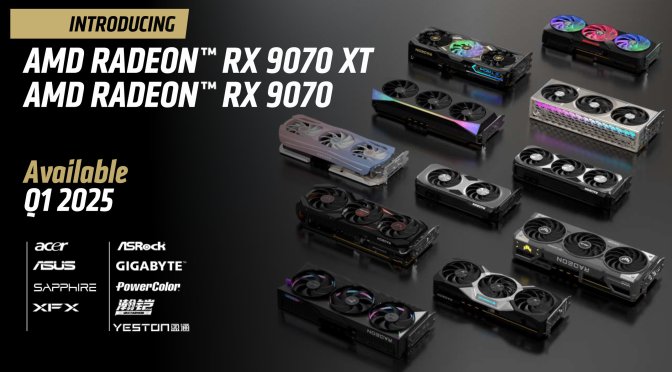Back in December 2024, AMD released an Adrenalin preview driver which seemed to have a DLL file for AMD FSR 4.0. And while this driver is no longer available for download, Osvaldo Pinali Doederlein analyzed it and shared some interesting details about it.
As we all suspected, it appears that AMD FSR 4.0 will be exclusive to the RDNA4 series GPUs. Thus, only the upcoming AMD Radeon RX 9070 and RX 9070XT will be able to fully take advantage of it.
As Osvaldo Pinali Doederlein noted, the ML model of FSR 4.0 is FP8-based. Right now, only the RDNA4 GPUs support WMMA which is required for it. This is why FSR 4.0 seems to be exclusive to the RDNA4 GPUs.
In theory, AMD may be able to make FSR 4.0 run on its RDNA3 GPUs as they support BF16. However, this will take some work. So, right now, the preview version of FSR 4.0 supports only the RDNA4 architecture. Whether this will change in the future remains to be seen.
According to some rumors, all FSR 3.0 games will be easily upgraded to FSR 4.0. Whether this will be with official patches or via replacing the DLL files is a mystery.
AMD will officially reveal its RDNA4 GPUs in March 2024. Although the red team briefed the media about these GPUs at CES 2025, it did not reveal them to the public. Instead of going all out, AMD decided to let NVIDIA announce first its RTX50 series GPUs. From the looks of it, AMD is waiting to see the performance of the RTX 5070 and RTX 5070Ti GPUs. This will help it to properly adjust the prices of the RX 9070 and RX 9070XT GPUs.
Stay tuned for more!

John is the founder and Editor in Chief at DSOGaming. He is a PC gaming fan and highly supports the modding and indie communities. Before creating DSOGaming, John worked on numerous gaming websites. While he is a die-hard PC gamer, his gaming roots can be found on consoles. John loved – and still does – the 16-bit consoles, and considers SNES to be one of the best consoles. Still, the PC platform won him over consoles. That was mainly due to 3DFX and its iconic dedicated 3D accelerator graphics card, Voodoo 2. John has also written a higher degree thesis on the “The Evolution of PC graphics cards.”
Contact: Email


